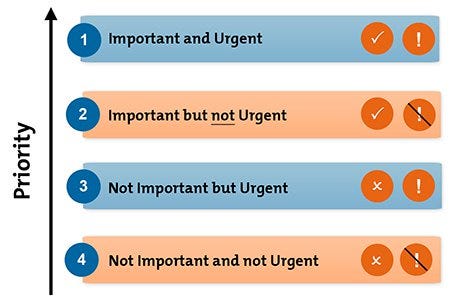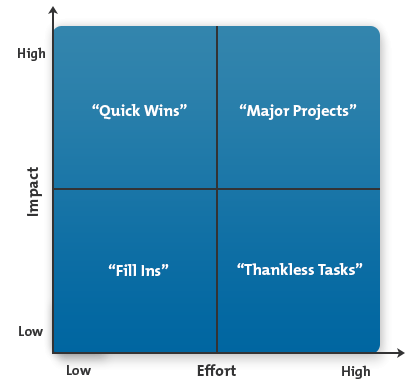“Does this spark joy?”
Marie Kondo’s decluttering philosophy is everywhere. It’s in our news feeds and Instagram stories. It applies to our book collections, Facebook friends, and even our family members.
In a nutshell: we should keep what causes joy and release what doesn’t.
The popularity of Kondo’s approach proves how good it feels to eliminate the excess in our lives.
The one place Kondo hasn’t tackled, however, might be the most cluttered of all: our minds.
The sheer process of streamlining can unleash a barrage of decisions: should we try yoga or meditation? How about wearing a life uniform like Barack Obama, or downloading one of thousands of new time management apps?
In today’s cutthroat entrepreneurial environment, there’s more mental clutter than ever before. First, there’s FOMO, the “fear of missing out.” Then, there’s the pressure not just to perform well, but to have a job that makes us feel good and fulfills our passion.
We’re trying to optimize every moment of our work and our personal lives. To top it off, we’re supposed to curate a personal brand of share-worthy experiences that prove we’re totally balanced — and killing it at work.
“When I made it out of my 20s without making the Forbes 30 Under 30 list, I wasn’t crushed, but I was far more disappointed than was healthy,” writes Inc. magazine columnist Melanie Curtin. “And it wasn’t about the recognition — it was the shame of feeling like I haven’t done enough with my life… and that time is running out.”
In this fast-paced, winner-takes-all-world, 45% of entrepreneurs report being stressed compared to 42% of “other workers,” and 34% (versus 30%) report being likely to have “worried a lot.” Not to mention, 72% feel overwhelmed by their roles and responsibilities. A full 64% feel they should delegate more. And, 38% struggle with time management.
In a world where “making it” means becoming a young, globally renowned success, it can start to feel as though we don’t have anything unless we have it all.
But research shows that, true to Kondo’s philosophy, more doesn’t necessarily mean better. In fact, a 2011 study conducted by PwC Consulting revealed that as an executive team’s priority list grows, the company’s revenue growth often declines relative to its peers.
It’s no stretch to apply the same reasoning to individual pursuits — the more personal and professional priorities we juggle, the less progress we make across the board. The more effectively we prioritize, the faster we grow (and, dare I say it, the healthier and happier we’ll be in the process).
To determine what’s truly important, we need new frameworks — outside the influence of Instagram, and free from feelings of FOMO. I’ve written before about the planning fallacy, and why so many of us underestimate how long a task will take us, perpetuating unnecessary feelings of failure.
At my company, Jotform, we focus on priorities. Instead of asking how much we can accomplish every day, we try to get the right things done each day.
Here are four approaches we use to choose the right things:
The Passion/Contribution Matrix
“It’s the overload of options that paralyze us or lead to decisions that go against our best interests,” writes Amy Jen Su, a managing partner & co-founder of executive coaching firm Paravis Partners.
To fight that paralysis, Su asks her clients to examine the intersection of two focus areas:
1. What is my highest contribution?
2. What am I passionate about?
When we prioritize the work in that intersection, we can align our highest contributions with our passions. This approach also helps to put work in perspective, reminding us to tolerate important, but energy-draining tasks.
For tasks that energize us, but others don’t view as critical, Su suggests we have a choice to make: either elevate their value to others or elevate ourselves by understanding what to let go, especially if we’ve outgrown a previous role.
Finally, it’s important to delegate (whenever possible) what Su calls “the daily churn of low-value and low-energy-producing activities, emails, and meetings.”
Eisenhower’s Urgent/Important Principle
For our ancestors, urgent activities were a matter of life and death. Ignore that leopard and it just might eat you for lunch.
But what used to be an evolutionary asset is often overkill in today’s world. From Instagram notifications to overflowing inboxes, it’s easier than ever to confuse distractions with necessities.
Author Douglas Rushkoff calls this “present shock” — a “continuous, always-on ‘now,’” in which it can be almost impossible to get anything done.
When it feels like we’re cracking under the pressure, the Urgent/Important Principle can help us determine what matters most.
- Is it a crisis, a problem, or a deadline? It fits in the important and urgent box. We should tackle these tasks right away, in order to avoid the pitfalls of procrastination and the pressure of last-minute deadlines.
- The important but not urgent box houses activities that enable us to reach our goals, but that rarely represent an immediate need (think: strengthening relationships or planning for the future). We feel most satisfied when we spend the majority of our time here.
- The not important but urgent tasks, like answering emails or text messages, occupy the third box: activities that others believe are important, but don’t actually matter to us. Setting boundaries or delegating can help to eliminate most of these tasks.
- Lastly, mindless tasks like watching Netflix or browsing the web fit in the not urgent and not important box. Spending five percent (or less) of our waking hours on these activities can free up our time for high-value pursuits.
Here’s another way to think about the four areas:
- Urgent and important: do immediately
- Important, but not urgent: schedule for later
- Urgent, but not important: delegate to someone else
- Neither urgent, nor important: try to eliminate
The Action/Priority Matrix
As entrepreneurs, it’s vitally important to focus on tasks that maximize our value. But creating a to-do list in this way can feel like trying to tell the future.
When we’re chasing tangible returns, the Action/Priority Matrix can clarify the ratio of effort to impact. Alternatively, replace the word “effort” with “feasibility,” and “impact” with a pressing need, such as “financial return.”
Step 1: List the major tasks you need to complete.
Step 2: Give each task an impact score (0 for no impact to 10 for maximum impact).
Step 3: Give each task an effort score (0 for no real effort, 10 for major effort).
Step 4: Plot your tasks on the Action/Priority matrix, according to your scores.
Step 5: Prioritize accordingly.
Quick Wins (high impact, low effort)
Quick wins provide great returns for relatively little effort. Give these tasks top priority.
Major Projects (high impact, high effort)
While major projects may produce good returns, they are also time-consuming. These should be a secondary priority.
Fill-Ins (low impact, low effort)
Tackle fill-ins only if you have spare time. If not, drop or delegate them.
Thankless Tasks (low impact, high effort)
Aim to avoid these activities altogether.
The Buffett Method
When it feels like we have too many priorities, The Buffett Method — inspired by renowned investor Warren Buffett — can help to eliminate what doesn’t matter.
To use this method, make a list of your top 25 career goals. Note: this exercise also works with project goals or timelines, such as the next week or month.
Next, review and circle your top five goals. As Buffett explains, here’s where it really gets simple:
“Everything you didn’t circle just became your Avoid-At-All-Cost list. No matter what, these things get no attention from you until you’ve succeeded with your top 5.”
Build your own
To build your own prioritization method, Paul Leinwand and Cesare Mainardi, authors of The Essential Advantage, suggest listing 3–6 things that you do better than anyone else. Maybe you develop your industry’s most innovative insights, for example, or you build better prototypes than any of your competitors.
Then, find a way to increasingly say “yes” to what perpetuates these abilities, and “no” to possibilities, invitations, and tasks that do not.
“The most pertinent question you can ask is not: ‘How can I find more business opportunities?’” Leinwand and Mainardi write. “It is: ‘How can I focus on the opportunities where my company can excel — and then reap the benefits of that discipline?’”
To truly take advantage of those opportunities, however, we also need to achieve balance.
According to Harvard Business Review, there are two kinds of entrepreneurial passion: “harmonious” and “obsessive.” Harmonious passion is the personal satisfaction derived from work that reflects our identity. Obsessive passion, on the other hand, is a constant focus on work, motivated by status, money, or other rewards.
In a survey of over 300 entrepreneurs, those with “harmonious” passion not only allowed themselves to pursue more enjoyable experiences, but were also more productive. “Obsessive” entrepreneurs, in contrast, focused on their jobs more often, and yet were less productive. They often felt guilty and distracted by unmet responsibilities related to their health or families.
When we don’t clear our mental clutter, it’s not just our social media feeds and optimized routines that suffer; we also risk becoming less effective in every area of our lives.
And yet, a little organization has the power to change everything. Just ask Kondo, who wrote these wise words in her runaway bestseller, The Life-Changing Magic of Tidying Up:
“We can only transform our lives if we sincerely want to. Small changes transform our lives.”
















Send Comment: